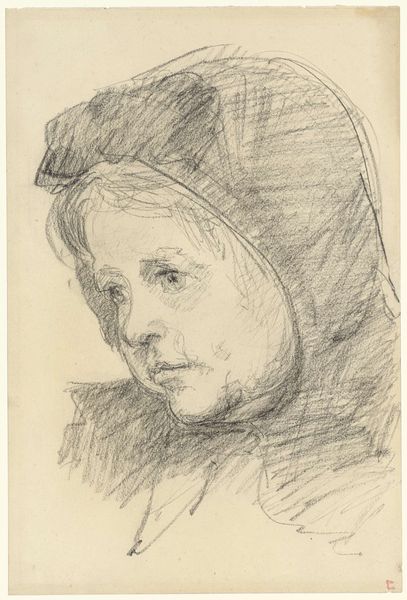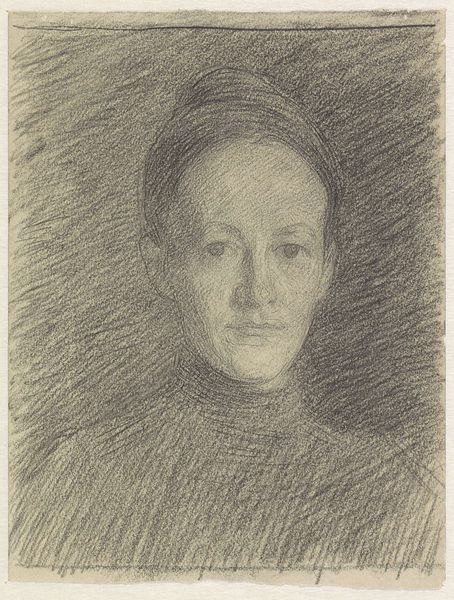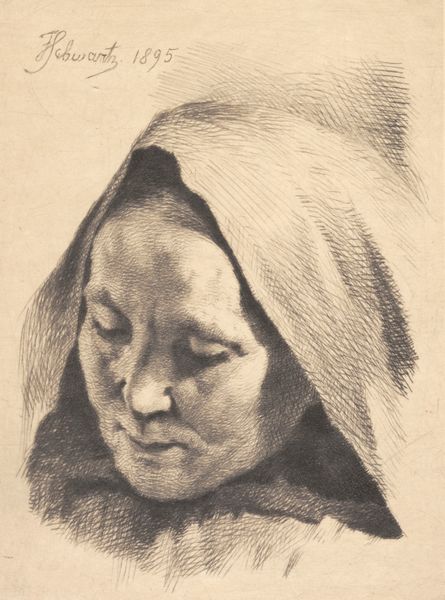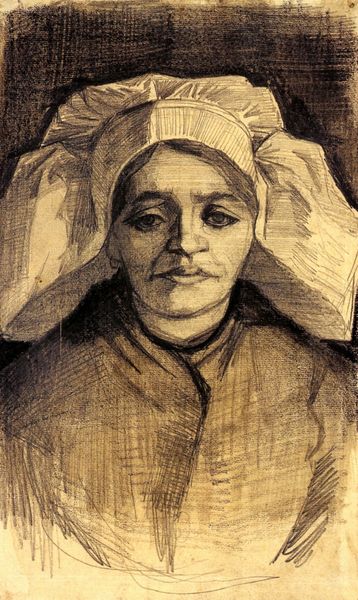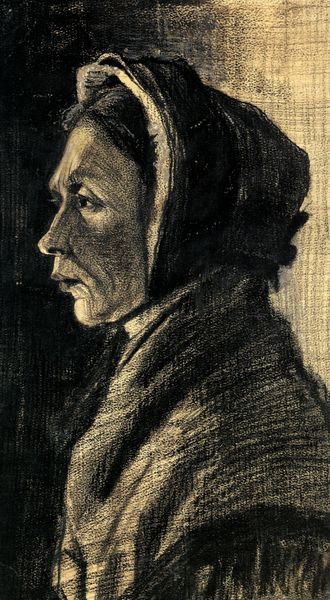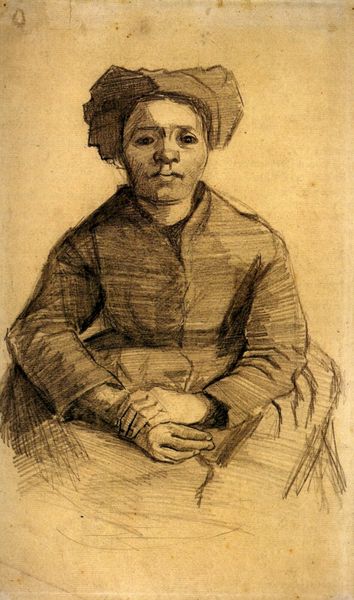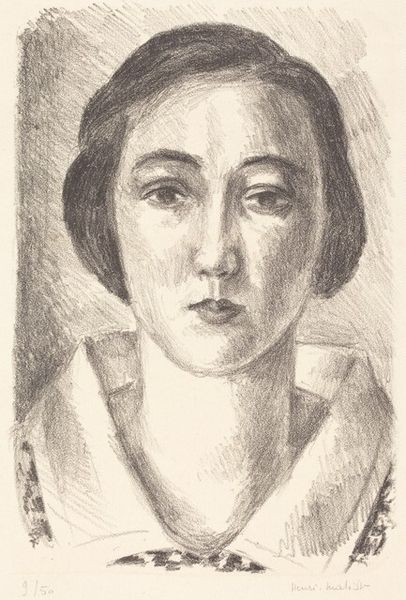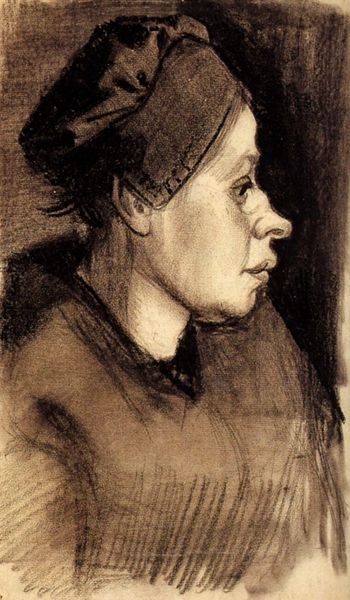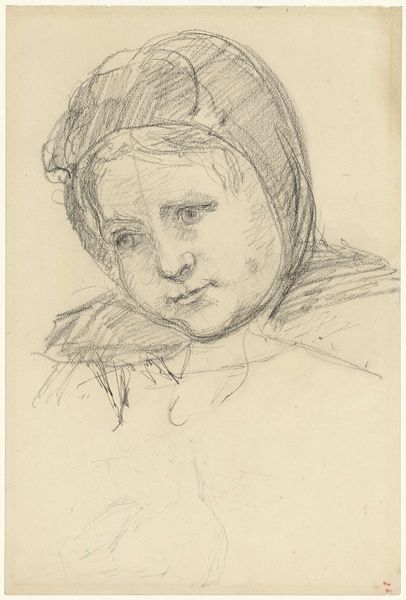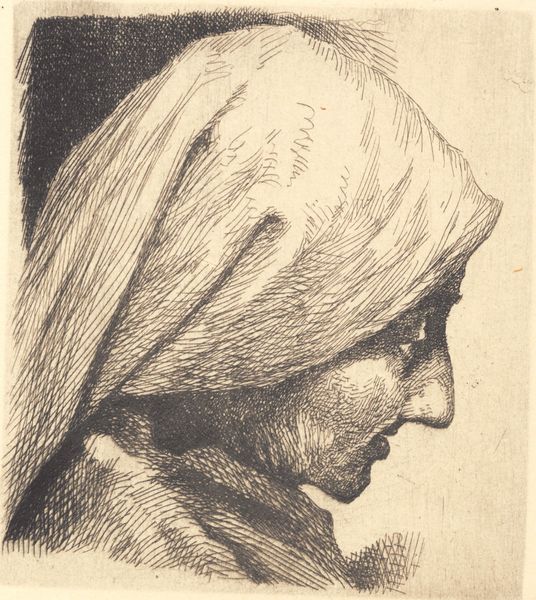
Woman with Dark Cap, Sien's Mother 1882
0:00
0:00
vincentvangogh
Groninger Museum, Groningen, Netherlands
drawing, charcoal
#
portrait
#
drawing
#
impressionism
#
charcoal drawing
#
charcoal
#
realism
Copyright: Public domain
Curator: This stark portrait immediately strikes me as one of deep resilience. Editor: Indeed. We’re looking at a charcoal drawing by Vincent van Gogh from 1882 entitled "Woman with Dark Cap, Sien's Mother." It’s currently held at the Groninger Museum in the Netherlands. The woman's direct gaze… there’s something undeniably powerful in it. Curator: Absolutely. The dark cap frames her face, but doesn't diminish it. It’s a visual anchor, grounding her in a specific time and place, but also highlighting universal experiences of hardship. Van Gogh manages to convey a certain solemn dignity, even nobility, in what might have easily been a portrait of despair. What do you read into that heavy shawl or coat she’s wearing? Editor: The rough texture of the charcoal work contributes to that feeling of struggle. It speaks to a life lived close to the earth, one defined by practical concerns rather than lofty ideals. But even though the clothes are plain, they speak to social class and offer visual insight to this woman’s working background in late 19th-century Netherlands. Curator: Her cap is the symbol of something more complex, maybe the communal expectations around women or even widowhood during this period? It evokes specific codes and expectations and also suggests belonging, doesn't it? There is almost something archetypal about her. She could be any mother, standing firm against life's inevitable hardships. Editor: The piece reminds me that museums and art galleries can also function as archives that record a legacy of human struggles, but through aesthetic interpretations of it, rather than documentary ones. Do you think, in viewing it as a drawing in a charcoal medium, it presents an incomplete perspective on her experiences, despite the artist’s social realist leaning? Curator: I appreciate the historical lens, but the deliberate mark-making makes it feel emotionally charged. It conveys an intimate knowing, which goes beyond just documenting appearance. Her gaze feels less like an observation and more like a confrontation. What about you, what will you remember about this portrait? Editor: I will think about how images like this shape our understanding of everyday experiences across history. Curator: For me, it’s the capacity for portraits to serve as lasting, poignant vessels of inner strength and emotional truth.
Comments
No comments
Be the first to comment and join the conversation on the ultimate creative platform.

